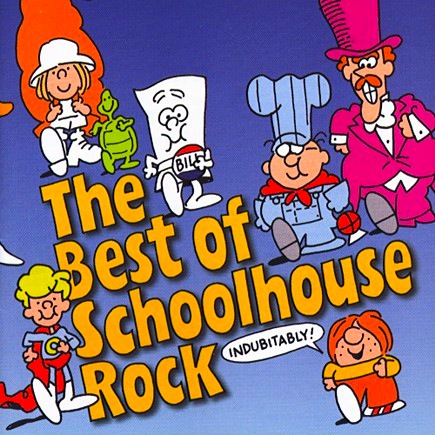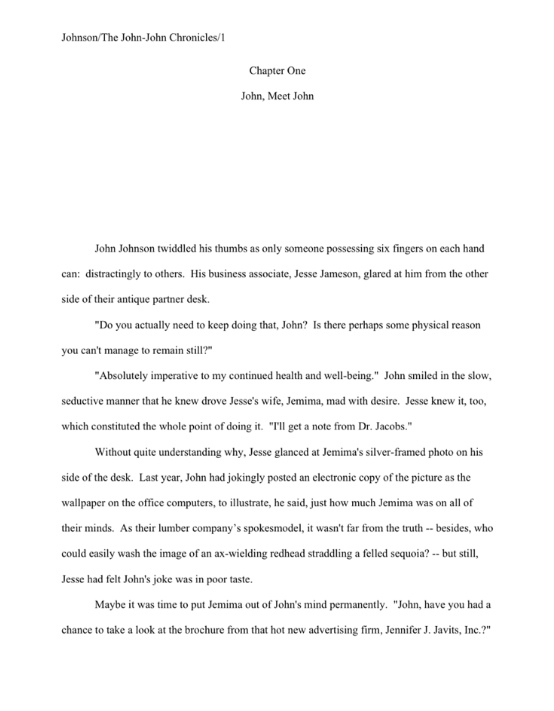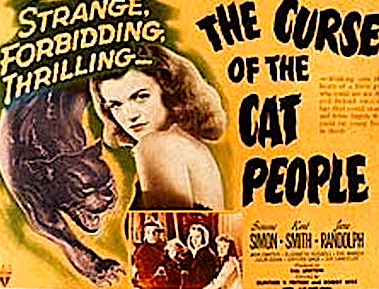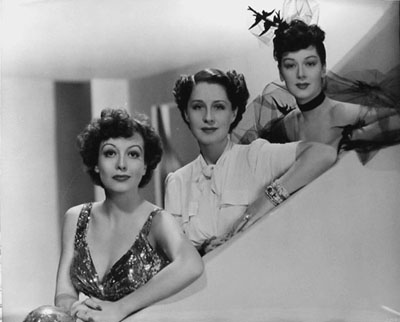
Yes, dear readers, it’s time once again to revisit Conjunction Junction. (And if that very thought made you long to rush out and find a copy of the old Schoolhouse Rock videos for your kids, you may find them here. You can buy them on other sites as well, but this one also features those great old Bop-Em Bozo inflatable punching bags! What’s not to love?) Since I’ve spent the last couple of posts taking about how professional readers tend to respond to repetition in submissions — summary for those of you who missed it: not well — I cannot in good conscience round off my lobbying for reduced repetition in your manuscripts without discussing those ever-popular inhabitants of Conjunction Junction: and, but, and then.
Ooh, that last sentence caused the grammar mavens out there to sit up and pay attention, didn’t it? Okay, you caught me: then isn’t strictly speaking a conjunction. However, enough writers are now using it as if it were a synonym for and in a list of actions (as in, Sophia kneaded the bread, baked it, then fed it to her forty-seven children.) that I feel justified in — nay, compelled to — include it here.
Language does grow and change, of course. Back in the bad old days, when dinosaurs roamed the earth and Roosevelts were presidents, it was considered improper to begin ANY sentence with and, but, or then; amongst the literate, these words were purely intra-sentence phenomena. As my Uncle Alex (a fairly well-known SF short story writer in the 1950s, an editor at the LA Free Press, and a stickler for grammar for his entire life) used to scrawl in the margins of letters I had written when he returned them to me, by definition, a conjunction connects one part of a sentence to another.
“Therefore,” he would ink in large letters, “they may not BEGIN a sentence. How’s your mother?”
There are easier things than growing up in a family of writers and editors. Toward the end of his long, colorful, and largely scurrilous life, Uncle Alex was even known to shout grammatical advice at the TV screen when newscasters began their sentences with conjunctions.
But despite Uncle Alex’s best efforts, time and the language have been marching on, and at this point in North American history, it’s considered quite acceptable to begin the occasional sentence with a conjunction. In fact, as you may have noticed, I do it here all the time, as do most bloggers and columnists.
That mournful crashing sound you just heard was Uncle Alec and his late cronies from the LA Free Press stomping their feet on the floor of heaven, trying to get me to cut it out, already.
Back to your celestial poker game, boys — your heavenly cacophony isn’t going to work. There are legitimate stylistic reasons to open a sentence with a conjunction. They can, for instance, be very valuable for maintaining an ongoing rhythm in a paragraph:
Evelina spotted the train pulling into the station. But would Jeremy be on it? He would — he had to be. And if he wasn’t, well, she was just going to have to call him to find out why. Or not. Anyway, she wasn’t going to waste her energy speculating on what would be a moot point the second Jeremy stepped off that train and caught her in his arms.
As Uncle Alex would undoubtedly have been the first (and last, and middle) to tell you, classic English grammar has an elegant means of preventing those conjunctions from hanging out at the beginnings of those sentences: by eliminating the periods and replacing them with commas. The result would look like this:
Evelina spotted the train pulling into the station, but would Jeremy be on it? He would — he had to be, and if he wasn’t, well, she was just going to have to call him to find out why — or not. Anyway, she wasn’t going to waste her energy speculating on what would be a moot point the second Jeremy stepped off that train and caught her in his arms.
To old-fashioned eyes — sorry, Uncle — this paragraph’s meaning is identical to the first; it is merely cleaner grammatically. However, I suspect that most current readers of English prose would recognize a difference in the rhythm. A period is, as the English like to call it, a full stop; a comma, on the other hand, indicates a pause. A dash indicates a slightly longer and more pointed pause. To this millennium’s sensibilities, the first example has a choppiness, a breathless quality that conveys the subtle impression that Evelina’s breathing is shallow, her pulse racing.
The periods my uncle would consider forbidden, then, could be regarded as indicators of protagonist stress. At least to those in the habit of breaking paragraphs down into their constituent parts to see what their functions are.
Which is, of course, why any of us pay a visit to Conjunction Junction, right?
Conjunction-opened sentences can also mirror actual speech better than more strictly grammatical ones, so the former can be a positive boon to dialogue. Contrast this sterling exchange:
“And I tell you, Maurice, it was eerie. I’m never going back into that deserted house again. And that’s final.”
“But Yvette, you’re ignoring the conventions of our genre! You’re a scantily-clad, unattached female who screams easily. But you are fleet of foot in the face of danger. Therefore, you must return!”
“Or what? Or you’re going to come after me with an axe?”
“Or else, that’s all.”
“Fine. Then give me the key to the tool shed.”
“If you insist. But don’t come crying to me when an axe comes crashing through your door at the closed-for-the-season hotel.”
with the same dialogue after the conjunctions have been tucked into the middle of the sentences:
“I tell you, Maurice, it was eerie. I’m never going back into that deserted house again. That’s final.”
“Yvette, you’re ignoring the conventions of our genre! You’re a scantily-clad, unattached female who screams easily, but you are fleet of foot in the face of danger; therefore, you must return!”
“Is there some penalty attached to my refusal? Are you going to come after me with an axe?”
“You must, that’s all.”
“Fine. Give me the key to the tool shed.”
“If you insist, but don’t come crying to me when an axe comes crashing through your door at the closed-for-the-season hotel.”
The difference is subtle, but it’s there: the second version is sounds more formal. Partially, this is a function of the verbal gymnastics required to avoid the colloquial Or what? Or else.
But these are not the only ways aspiring writers utilize sentence-beginning conjunctions in narrative prose, are they? As anyone who has ever been trapped in a conversation with a non-stop talker can tell you, beginning sentences in this way gives an impression of consecutiveness of logic or storyline. (As was the case with the previous sentence, as it happens.) Even when no such link actually exists, the conjunctions give the hearer the impression that there is no polite place to interrupt, to turn the soliloquy-in-progress into a dialogue.
I’m not going to give you an example of this, because we all hear it so much in everyday speech. If you feel that your life lacks such monologues, try this experiment: the next time you’re at a boring cocktail party (they’re coming back, I hear), try this experiment, preferably on a stranger or someone you do not like very much: tell a lengthy anecdote, beginning every sentence with either and, but or then. Take as few breaths as possible throughout — and time how long it takes a reasonably courteous person to get a word in edgewise.
Personally, I’ve kept this game going for over 15 minutes. The imminent threat of fainting due to shortness of breath alone stopped me.
Which is, in case you happen to be writing about such things, why panhandlers and telemarketers so often speak for minutes at a time in what seems to the hearer to be one long sentence: it discourages interruption. Almost invariably, this phenomenon is brought to you by the heavy lifting skills of and, but and then.
For this very reason, aspiring writers just LOVE to tuck conjunctions in all over the place: to create the impression of swift forward movement in the narrative. Or, even more often, to create a chatty-sounding first-person narrative voice.
Sometimes, this can work beautifully, but as with any repeated stylistic trick, there’s a fine line between effective and over-the-top. Because it is a device that professional readers see so very much, you might want to screen your submission for its frequency.
Particularly, if you’ll forgive my being a bit pushy and marketing-minded here, in the early pages of your manuscript. And absolutely on the first page.
Why especially the opening? Long-time readers, chant it with me now: agents and editors tend to assume that the writing on pages 1-5 is an accurate representation of the style throughout the entire manuscript. Heck, many of them proceed on the assumption that what is found on the first page, or even the first paragraph, is an infallible indicator of subsequent writing quality.
This often-unwarranted assumption, in case you’re interested, underlies Millicent’s practices of not reading past any problems that might turn up on page 1 of a submission: once you’ve seen a modicum of this author’s writing, she reasons, you’ve seen enough.
No comment.
As I’ve been hinting at over the last few posts, narrative structure and voice are not just matters of style; to a market-savvy writer, they are also matters of strategy. If you over-use ANY single narrative tool in those early pages, Millicent and her ilk are not going to stick around to see whether you’ve mended your ways by page 25, alas. They’re going to stop reading, so they may move on to the next submission.
Do I hear some moaning out there that’s not attributable to my late relatives heavenly cohort? “But Anne,” these disembodied voices moan, bravely beginning their protest with a conjunction, thus risking a thunderbolt flung by Uncle Alex and whatever minor deities he may have managed to befriend in his time in the choir eternal; he always did throw great parties, “not every book’s best writing falls on its first page, or even within its first chapter. Many, many writers take a chapter or two to warm up to their topics. So doesn’t this practice give an unfair advantage to those writers who do front-load their work?”
In a word, yes.
I would highly recommend it, in fact, because I want your work to succeed. So instead of complaining about the status quo (which I could, at great length), I’m going to give you some hints about how to minimize the problem early on, so your work can get a comparatively fair reading.
So whip out your trusty highlighter pens, and let’s get to work.
Print out the first 5 pages of your submission; if you want to be very thorough, print the entire first chapter, as well a random page from each subsequent chapter. Pick a color for and, one for but (go ahead and use it for the howevers and yets, too), and one for then.
Why these words and no others? Well, these particular ones tend to get a real workout in the average manuscript: when writers are trying to cover material rapidly, for instance, and, but, and then often appear many times per page. Or per paragraph.
Or even — yes, I see it all the time — per sentence.
So ready, set, start marking. Not just where these words open a sentence, mind you, but EVERY time these words appear on those pages.
All finished marking? Good. Now go back and re-examine every use of then, asking yourself: could I revise that sentence to cut the word entirely? If it begins a sentence, is that the most effective opening?
At the risk of seeming draconian, you should seriously consider excising every single use of then in those opening pages — and seriously considering getting rid of most of the ones thereafter. Sound drastic? Believe me, I have an excellent reason for suggesting it: many professional readers have a visceral negative reaction to repetitive use of then that sometimes borders on the paranoiac.
Why? Well, it’s one of the first words any professional editor would cut from a text, because in written English, pretty much any event that is described after any other event is assumed to have happened later than the first described, unless the text specifies otherwise. For instance:
Herve poached the eggs in a little butter, slid them onto the plate, then served them.
Ostensibly, there’s nothing wrong with this sentence, right? Perhaps not, but given the average reader’s belief that time is linear, it is logically identical to:
Herve poached the eggs in a little butter, slid them onto the plate, and served them.
Technically, then is unnecessary here. In fact, thenis almost always omittable as a purely temporal marker.
Yet it is very widely used in submissions as a matter of style — or, if appears frequently enough, as a characteristic of authorial voice. To professional eyes, it’s merely redundant, if not a sign that the writer is getting a bit tired of writing interestingly about a series of events and so crammed them all into a list.
Which brings me back to my earlier suggestion: in your first five pages, you would be wise to avoid provoking this reaction by cutting all of the thens. Actually, it’s not a bad idea to omit temporal thens altogether in your writing UNLESS the event described after them is a genuine surprise or happened suddenly. Here’s an instance where the use is undoubtedly justified:
Herve poached the eggs in a little butter, slid them onto the plate — then flung their steaming runniness into Anselmo’s astonished face.
Now THAT’s a then that signals a change in sentence direction, isn’t it? Reserving the device for this use will render your thens substantially more powerful.
Let’s turn now to the buts, howevers, and yets on your marked-up pages. Each time they appear, ask yourself: is the clause that immediately follows the word ACTUALLY a shift in meaning from what has come immediately before it? If not, consider excising the words altogether.
I hear more squawking from the non-celestial peanut gallery. “But Anne,” they cry, bravely persisting in their long-term habit of opening every protest hurled my way with a conjunction, “you can’t seriously mean that! Don’t you mean that I should carefully rewrite the sentence, substituting another word that means precisely the same as but, however, or yet? The whole point of my introducing however and yet was to give my but a periodic rest, after all.”
Good question, but-resters, but I did mean what I said. But, however, and yet all imply contradiction to what has already been stated, but many aspiring writers use these words simply as transitions, a way to make the sentence before seem to flow naturally — that is, in a way that sounds like conversation — into the next. What I’m suggesting here is not that you remove every legitimate negation, but rather that you should remove the negative conjunctions that are misused.
How may you tell the difference? Let’s take a look at some practical examples:
Bartholomew wanted to answer, but his tongue seemed to be swelling in his mouth. Was it an allergic reaction, stress, or had Musette poisoned him? He felt panic rising within him. However, his epi pen was in the pocket of his fetching dressing gown, so he need not panic. Yet now that he began to search for it, his personal first-aid kit seemed to have vanished from its usual resting-place.
“Cat got your tongue?” Musette asked sweetly, adding another lump of strangely-colored sugar to his tea.
I would vote for keeping all of buts, howevers, and yets in this paragraph, because each is serving its proper function: they are introducing new facts that are genuinely opposed to those that came just before the conjunction. That is not always the case, however. Take a look at a version of the same scene where none of these words is ushering in a twist related to the last information before it:
Bartholomew settled his fetching dressing gown around him irritably, but his tongue seemed to be swelling in his mouth. Was it an allergic reaction, stress, or had Musette poisoned him? He felt panic rising within him. However, he could not breathe. Yet his asthma seemed to be kicking in full force.
“Cat got your tongue?” Musette asked sweetly, adding another lump of strangely-colored sugar to his tea.
See the difference? By including conjunctions that imply an opposition is to follow, but not delivering upon it, the transitional buts, howevers, and yets ring false.
Yes, this level of textual analysis IS a heck of a lot of work, now that you mention it. Strategically, though, it’s worth it, for this device is so popular amongst aspiring writers that the transitional but has become, you guessed it, a common screeners’ pet peeve.
Harrumphs all round from my interlocutors, earth-bound and otherwise. “No big surprise there,” they huff. “To hear you tell it, it doesn’t take much for a writerly preference to graduate to industry pet peeve.”
Actually, it does take much — much repetition. It just doesn’t take very long manning the screening desk to discover the first 100 submissions that all share the same narrative device.
And yes, Virginia, the transitional but IS that common. As is the unnecessary then. Trust me, agents and editors alike will bless you if your manuscript is relatively light on these overworked words.
Or if you don’t overuse favorite words in general. English is a marvelous language for prose because contains so very many different words; it enables great precision of description.
“So why on earth,” Millicent wonders, wrathfully waiting for her latte to cool (for once), “do these submissions keep leaning so heavily on to be, to have, to think, to walk, to see, to say, and to take? If it happened in, say, one submission out of fifty, I could cope with it, but every other one?”
Fact: varying your word choice almost always makes a better impression upon professional readers than leaning too heavily on the basics.
That’s a fact that I wish more first-time submitters knew, but usually, US writers been taught just the opposite: all throughout their school years, teachers kept flinging THE OLD MAN AND THE SEA at us and quoting either Mark Twain or Somerset Maugham’s (depending upon how old the teachers were, and what examples THEIR teachers had used) overworked axioms about never using a complex word when a simple word would do.
The reason that your teachers told you this is not that simple, straightforward words are inherently better than polysyllabic ones, but because they were trying to prevent you from making the opposite mistake: a narrative that sounds as if it has swallowed a thesaurus whole, dragging in pretentious or obsolete words inappropriate to the book category or target market. For most manuscripts, this is still pretty good advice.
Now, however, it’s considered less a mater of style than of marketing. Remember, the standard vocabulary expectation for adult fiction is a 10th-grade reading level; in many genres, it’s even lower. Doing a bit of reading in your chosen category can help you figure out where to pitch your word choices.
Not only is the gratuitous induction of polysyllabic terminology into a tome projected for a less erudite audience not liable to electrify a professional reader into spontaneous cries of “Huzzah!” (see how silly it looks on the page?) — it can also stick out like the proverbial sore thumb, knocking the reader out of the story.
The much-hyped 2007 movie JUNO contained such a sterling example of this that you might want to consider renting it just to see this phenomenon in action. After spending fully two-thirds of the film establishing the protagonist’s father as a Working Man with a Heart of Gold, living in a house that apparently contains no books, repeatedly telling better-heeled folk that he’s just a plain man, and who never once mentions to his pregnant 16-year-old daughter that her condition might conceivably (so to speak) affect any future college plans she might have (to be fair, the film never indicates that she has any, although her boyfriend does), he says to his daughter, “You look morose.”
At which, naturally, half of my fellow theatregoers laughed, believing this line to be a joke, because it didn’t seem to be a word that this character would ever use. Yet from context, it wasn’t intended humorously: evidently, the screenwriter simply liked the word.
More on overused conjunctions follow in the days to come, so don’t toss out those marked-up pages, please: next time, it’s on to the ands. In the meantime, keep up the good work!



















